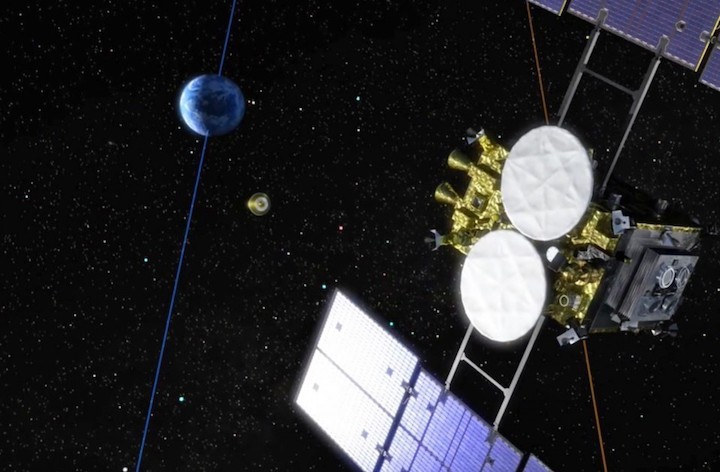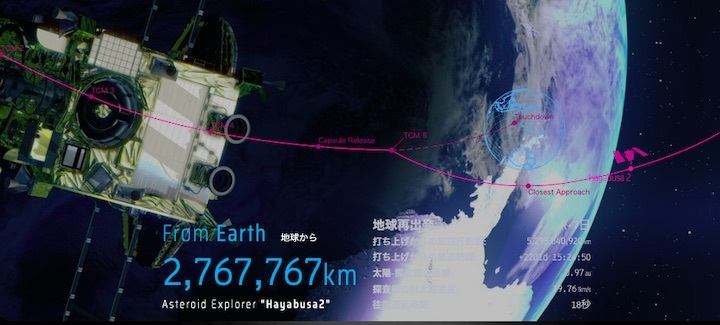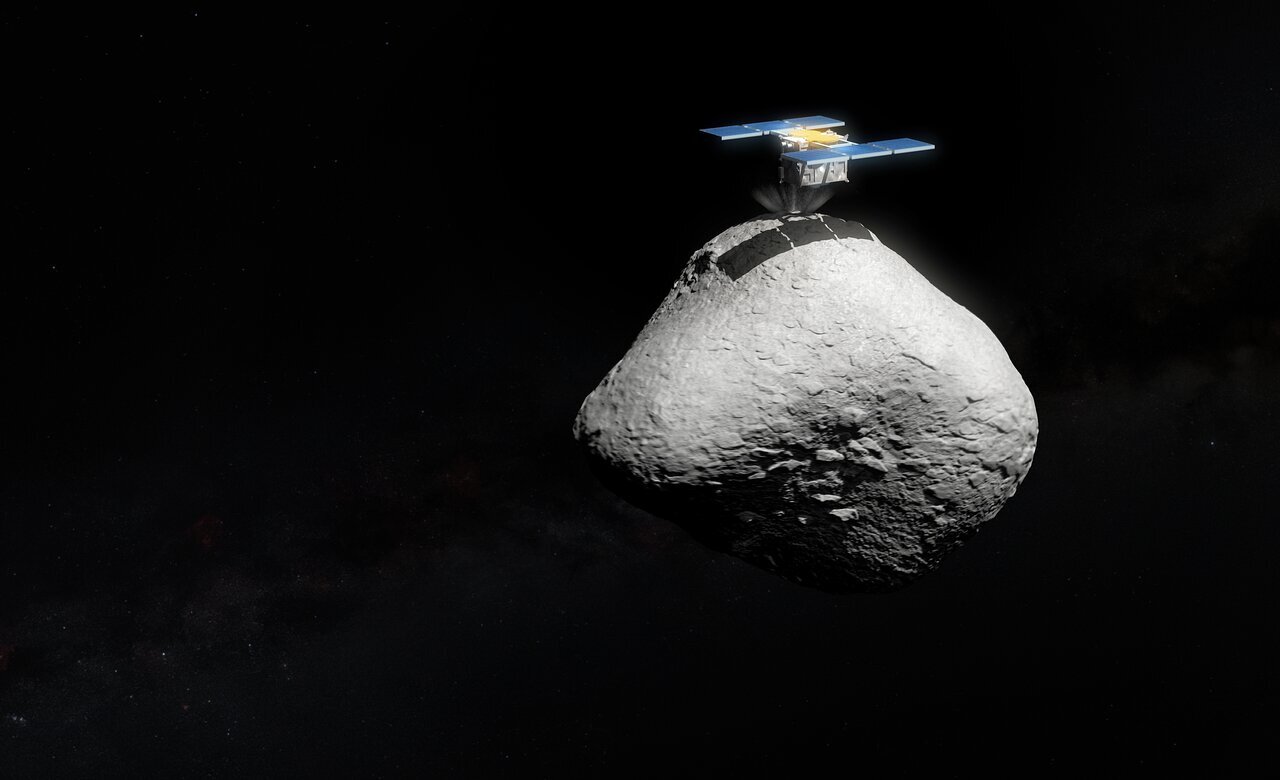16.09.2020
Japan's Hayabusa2 space explorer will aim to probe the asteroid "1998KY26" located between the orbits of Earth and Mars in 2031 after completing its current mission of collecting samples from another asteroid, the country's science minister said Tuesday.
It is hoped Hayabusa2 will approach the ball-shaped asteroid, which has a diameter of around 30 meters and rotates about every 10 minutes, in July 2031, Education, Culture, Sports, Science and Technology Minister Koichi Hagiuda said.

The probe is expected to observe the spinning asteroid by camera without landing on it, according to the Japan Aerospace Exploration Agency.
Since "1998KY26" is assumed to be a carbon-rich asteroid similar to Ryugu, which Hayabusa2 probed on its current mission, comparing observed data between the two may lead to a new discovery.
Hayabusa2, which was launched on a rocket in December 2014, is scheduled to return to the vicinity of Earth in early December and drop a capsule containing the samples of Ryugu before embarking on the new mission. The capsule is expected to land in southern Australia.
JAXA had also studied the asteroid "2001AV43," which is orbiting the sun in between Earth and Mars, as a potential target for Hayabusa2's next mission.
Quelle: Kyodo News
----
Update: 12.12.2020
.

Quelle: JAXA
----
Update: 20.09.2025
.
Can Hayabusa2 touchdown? New study reveals space mission’s target asteroid is tinier and faster than thought

Astronomers have used observatories around the world, including the European Southern Observatory's Very Large Telescope (ESO’s VLT), to study the asteroid 1998 KY26, revealing it to be almost three times smaller and spinning much faster than previously thought. The asteroid is the 2031 target for Japan’s Hayabusa2 extended mission. The new observations offer key information for the mission’s operations at the asteroid, just six years out from the spacecraft’s encounter with 1998 KY26.
“We found that the reality of the object is completely different from what it was previously described as,” says astronomer Toni Santana-Ros, a researcher from the University of Alicante, Spain, who led a study on 1998 KY26 published today in Nature Communications. The new observations, combined with previous radar data, have revealed that the asteroid is just 11 metres wide, meaning it could easily fit inside the dome of the VLT unit telescope used to observe it. It is also spinning about twice as fast as previously thought: “One day on this asteroid lasts only five minutes!" he says. Previous data indicated that the asteroid was around 30 metres in diameter and completed a rotation in 10 minutes or so.
"The smaller size and faster rotation now measured will make Hayabusa2’s visit even more interesting, but also even more challenging,” says co-author Olivier Hainaut, an astronomer at ESO in Germany. This is because a touchdown manoeuvre, where the spacecraft ‘kisses’ the asteroid, will be more difficult to perform than anticipated.
1998 KY26 is set to be the final target asteroid for the Japanese Aerospace eXploration Agency (JAXA)'s Hayabusa2 spacecraft. In its original mission, Hayabusa2 explored the 900-metre-diameter asteroid 162173 Ryugu in 2018, returning asteroid samples to Earth in 2020. With fuel remaining, the spacecraft was sent on an extended mission until 2031, when it’s set to encounter 1998 KY26, aiming to learn more about the smallest asteroids. This will be the first time a space mission encounters a tiny asteroid — all previous missions visited asteroids with diameters in the hundreds or even thousands of metres.
Santana-Ros and his team observed 1998 KY26 from the ground to support the preparation of the mission. Because the asteroid is very small and, hence, very faint, studying it required waiting for a close encounter with Earth and using large telescopes, like ESO’s VLT in Chile’s Atacama Desert [1].
The observations revealed that the asteroid has a bright surface and likely consists of a solid chunk of rock, which may have originated from a piece of a planet or another asteroid. However, the team could not completely rule out the possibility that the asteroid is made up of rubble piles loosely sticking together. “We have never seen a ten-metre-size asteroid in situ, so we don't really know what to expect and how it will look,” says Santana-Ros, who is also affiliated with the University of Barcelona.
“The amazing story here is that we found that the size of the asteroid is comparable to the size of the spacecraft that is going to visit it! And we were able to characterise such a small object using our telescopes, which means that we can do it for other objects in the future,” says Santana-Ros. “Our methods could have an impact on the plans for future near-Earth asteroid exploration or even asteroid mining.”
“Moreover, we now know we can characterise even the smallest hazardous asteroids that could impact Earth, such as the one that hit near Chelyabinsk, in Russia in 2013, which was barely larger than KY26,” concludes Hainaut.
Notes
[1] Aside from the VLT, the telescopes used include the Gemini South Telescope, the Southern Astrophysical Research Telescope, the Víctor M. Blanco Telescope and the Gran Telescopio Canarias. The first three facilities are operated by the US National Science Foundation's NOIRLab.
Quelle: ESO
